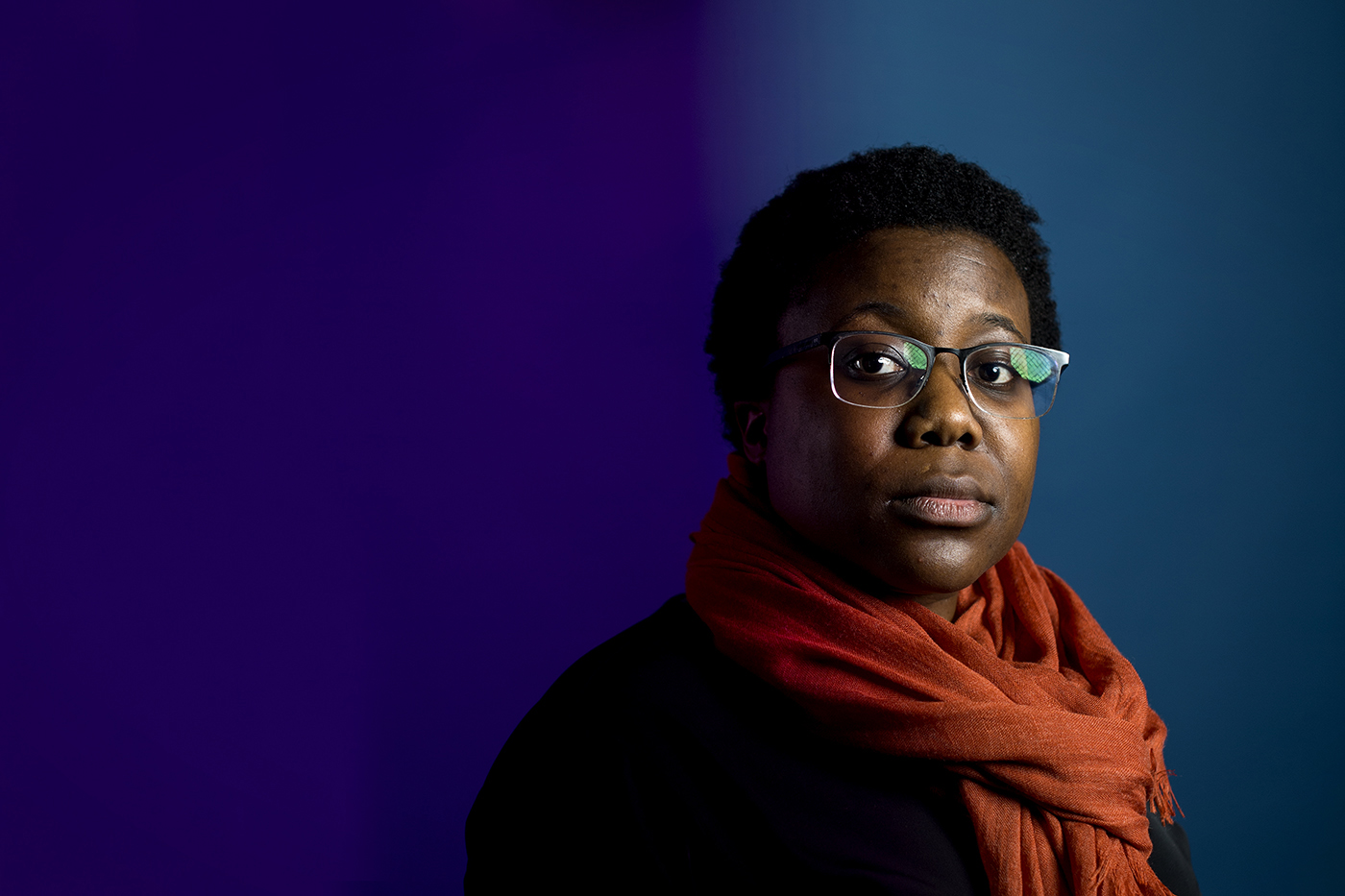The rise of TikTok, Snapchat, means the biggest hashtag of 2020 might not be a hashtag at all

In 2018, #MeToo, #BlackLivesMatter, and #NoBanNoWall coalesced into social movements that defined the year. In 2019, the #ClimateStrike led by youth activist Greta Thunberg made headlines. In 2020, Twitter hashtags might not cut it, says Moya Bailey, an assistant professor at Northeastern who studies the way digital media is used to promote social causes.

Moya Bailey is an assistant professor of culture, societies, and global studies; and women’s, gender, and sexuality studies in the College of Social Sciences and Humanities. Photo by Matthew Modoono/Northeastern University
Bailey says that with a climate crisis bearing down on us, and with protests rooted in wealth inequality cropping up around the world, “There’s more of a cultural shift that I think young people understand needs to happen, and that’s not something that’s easily conveyed in a hashtag or on a social platform.”
Twitter, a platform that has amplified social movements for the last decade, may prove to be fading from prominence in the next.
“It’s a question of demographics,” Bailey says. “The population of people on Twitter is aging, and other social media sites that have different demographic makeup are rising up to take its place.”
The average age among Twitter users in the United States is 40 years old, according to a study from the Pew Research Center this year. Meanwhile, social media sites such as TikTok and Snapchat attract a population that is largely under 30 years old, according to Pew and MediaKix, a company that tracks media trends.
Because they have such different demographic makeups, different trends emerge among these various platforms, Bailey says.
On TikTok in particular—a social media platform on which users post short-form mobile videos—“You do get cat memes and distraction, but there’s also a bit of nihilism,” Bailey says.
Bailey’s noticed a nihilistic bent among younger generations in general, she says.
“I think they, more than anyone, get a sense that the writing’s on the wall,” Bailey says. “For folks like Greta Thunberg [a 16-year-old who is leading global protests over climate change] and her cohort, there’s a sense that they’re making a lot of noise, but people aren’t changing their behavior.”
Bailey says that to focus too closely on trending hashtags is to “miss, in some sense, the ways that [young people] are organizing, and their savvy in terms of understanding the limits of politics as usual.”
Among her own students, Bailey says she’s seen a renewed interest in building communities in person, offline. She’s also seen young people make different choices than their older cohorts about how to spend money—living with roommates rather than buying a house in order to have more money to spend on causes in which they believe, for example.
“There are ways that young people are agitating for change that remain invisible online,” she says.
For media inquiries, please contact Shannon Nargi at s.nargi@northeastern.edu or 617-373-5718.





